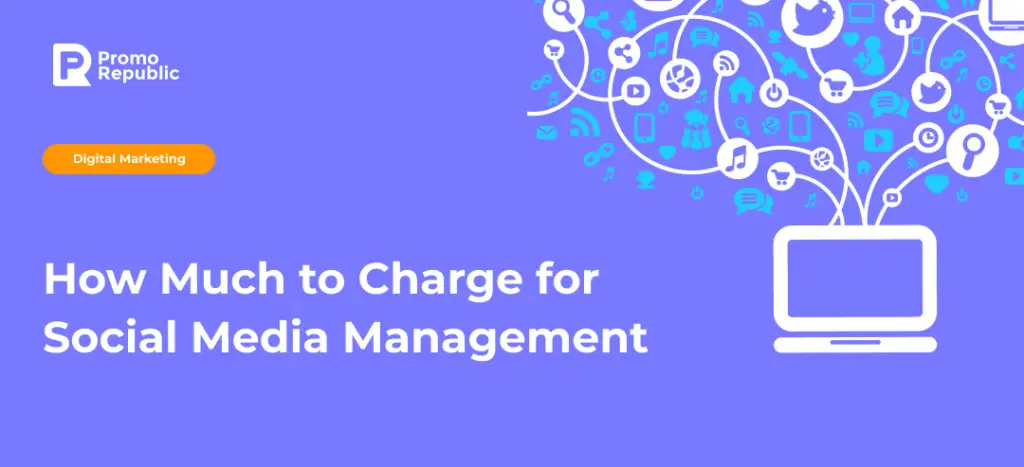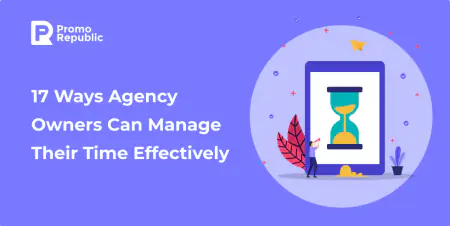How Much to Charge for Social Media Management

CMO/Product Owner for Agency&SMB product
How Much to Charge for Social Media Management
This question continues to arise, no matter how much this topic is discussed. How exactly should the cost of services be formed? What does it depend on? Is there a single format or algorithm? How to set the price high enough to stay afloat and earn money, but at the same time not too high to get outbid by others for the same job? As you can guess, it is not an easy question to answer, but still, we’ll put things into perspective.
Contents:
- What social media managers do
- How to form your price
- Steps to determine how much to charge
- Ways to charge
- Do’s and Don’ts.
- Signs it’s time to change your prices.
1. What social managers do
Many people mistakenly believe that social media managers are just posting things at the right time and on their chosen social media. It may seem like the company is hiring a human-robot to automate one single, uncomplicated process.
However, the social marketing manager itself is the voice of the brand. Their work is complex and can include:
- Creating posts and tracking their effectiveness.
- Creating sales funnels and generating new leads.
- Communicating with potential or existing users.
- Increasing engagement and understanding what the buyer wants.
- Seeking to reveal why a client should interact with a business, brand, product, or service.
- Giving insights on paid advertising, working with influencers, and elevating organic traffic.
- Ensuring that the visual representation of the business profile on social media accounts is perfect.
- Checking that the content is SEO optimized and precisely finds the right target audience.
- Bringing together a strategy for engagement with potential clients to build relationships and influence them to buy.
- Reporting on industry, competitors, agencies, sharing case studies and the latest trends in online marketing.
When it comes to agencies; the key activities are content production, campaign management, tracking, and community management, customer service, handling customer complaints, and consultations can also be part of the job description. For example, when a brand starts to crystallize its brand’s voice or drastically changes the old one, an expert needs to rebuild the messaging style and create a whole new brand image that will drive positive engagement. An agency owner can demand more than simple media management as they may want to make the best impression on their customers.
2. How to Form Your Price
Your education, work experience, and skill list, along with other factors, directly affect the quality of your work. Therefore, feel free to include all of these parts while determining the price.
- Education and Certification
- Industry Experience
- Remote or on Location
- Special Skills
Research what your direct competitors are charging.
To understand how much to charge for social media management, you can easily search online job boards or LinkedIn to check out the pricing in your geographical area. Thorough market research can give you a fairly accurate understanding of prices for both freelancers and agencies. Gather some numbers to see what other people and companies earn and compare your capabilities to come up with your price.
Remember, not every competitor is a direct one. Don’t waste your time looking at freelancers if you’re a full-service agency. To make your calculations more precise, pay attention to these factors:
- Number of employees
- Client industry
- Client company size
- Services
Not all agencies will have pricing package info on their page, but some of them will, and that’s a great place to start.
Collect feedback about your existing pricing.
Pay attention to how many customers are unsatisfied with your pricing policy and what kind of objections you usually face. Or maybe people tell you that your prices are much lower than those of other agencies and your services are even too cheap.
If your prices are shown on your website, pay attention to an increase or a decrease in inbound leads. A perfect scheme is to have 50% of leads who think your services are expensive and 50% of leads thinking it is cheap. If you see a noticeable bias in one direction, perhaps your rates are higher than they should be. If everyone thinks that your services are too cheap, you’re most certainly undercharging for the value you provide and stunting your business growth. Study the market again and reconsider your pricing policy.
Consider the needs of your best-fit clients.
After you have studied the market, the prices of your closest competitors and objectively looked at the cost of your services; the next step is to brainstorm what your best-fit clients need.
First of all, think about your favorite clients. Which clients have you gotten the best results for in terms of impressions, account sales, leads, and growth? How exactly did you manage to achieve such results? Once you figure it out, you can better understand how to put similar service provisions and approaches in a monthly package for other clients.
Create your custom package pricing.
The package you created in the previous step is a perfect middle-tier. This option is the one you always see on other agencies’ sites with the “most popular” sticker on it. Consider it the most common service plan you’ll sell and create a package that is a bit smaller than this and one that is a bit larger. Make sure there is no pricing associated with these social media management packages, and you can even share the info without prices included. You can easily customize your pricing for each package if you want to. For example, instead of the price per package, why not upload a “contact us” button so that each client can discuss their terms of use.
It’s crucial to develop your prices and packages whether you put them on your site or not. This way, you can provide accurate quotes to your target audience.
Test your pricing with prospects and clients.
The last step is the implementation of your new pricing and testing it. Showcase the packages to your users and then ask them for feedback. Help them decide which is the right one for them, or if they have unique needs, then offer to customize a package. Pay attention to the feedback you’re getting because you want to hit that ‘sweet spot’; where some people will find your services too pricey (common occurrence), but more than half of your prospects will be a definite “yes.”
When you feel good about your packages and pricing, show it to existing clients and give them a one or two-month heads up. Make sure to ask for feedback once in a while to make changes if needed.
3. Ways to Charge
There are several options of how you can charge your clients:
- Hourly
- Monthly
- Project-Based
- Package- Based
Before considering what option would be ideal for managing social media, ask your clients for insight into what they hope to achieve. It will be easier to choose the most suitable strategy and meet the client’s expectations.
Hourly Rate
This option is best suitable for freelancers as you can talk with your clients and decide the exact or approximate amount of hours they need you to work per week or month. For example, if someone needs your services for 10 hours per month, you can charge them $30/hour and get $300 at the end. This is a great way to start. Later you can get more clients and/or increase your hourly rate. Also, with an hourly rate, a social media manager can schedule posts to do several days of work within a few hours.
Advantages:
- You know how much time you need to work, and once the job is done, you are free.
- You clearly understand whether you have enough time to take another client or you are fully loaded.
Disadvantages:
- It may be challenging to scale your business by building a team.
- Your previous clients may hire you again and expect you to charge the same price or finish the job at the same time.
- Conflicts with clients because if you are late with your job you will charge more and the clients will always be on the opposite side of the table.
Monthly Fees
As you build up your experience and increase your confidence as a social media expert, you can use a monthly retainer. The key benefit of choosing this option is that you get recurring income and have more time to focus on your work. Also, it is easier to get paid by one consistent client instead of constantly searching for new clients.
Another thing about a monthly retainer is that it offers more flexibility; you can create a package that focuses on their experience while meeting the clients’ needs.
The “con” of charging clients per month for social media marketing is that workloads can increase rapidly. Sometimes clients believe that they ‘own’ your time and therefore give you as much work as they can. Others may take advantage of ‘your time’ by consistently adding edits or rejecting work and requesting it to be done numerous times.
Advantages:
- No surprises as clients know what to expect, and you get paid every month.
- You can scale your business because you can easily plan your finances ahead of time.
- It is easier to take more clients as you can organize yourself better.
Disadvantages:
- It is easier for customers to cancel your service after only a few months. Nothing is keeping them attached to you for more than a month, creating certain cash flow problems if you hired more people to work for an agency.
Per Project
This pricing option is ideal when the job is lengthy. It is perfect when setting up new clients or introducing a new product into the market. Firstly you estimate the project, then you create a pricing package. Charging per project is excellent for clients who want to start something and then take over and maintain it themselves. It is also suitable for a project that has a one-off occurrence.
Advantages:
- Flexibility in outsourcing some of the work if you want to scale.
- Project-based pricing allows you to embed all your operating expenses within the project costs more easily than it is at an hourly rate.
- You are not tied to a rate. You can calculate how much work will be needed for the client.
Disadvantages:
- You’re not in control of the project’s speed. Some clients may drag the project that could have been done a while ago because they know you have been contracted. If you leave, it will affect the brands’ reputation.
Packages
More and more small businesses seek the services of social media consultants and managers, and there are various packages that you can offer them.
The type of package you offer provides different price points and outcomes and dictates how much they want to accomplish. Here are some examples to help create a package:
- Basic package: manage two social media accounts (choosing from Facebook, Twitter, Linkedin, Youtube, Snapchat, or Instagram) with content creation and customer engagement.
- Advanced package: manage four social media accounts, including blog posts, content creation, and customer engagement.
- Pro package: manage six social media accounts, including influencer marketing, blog posts, content creation, and customer engagement.
The packages can be customized to meet the needs of the customer.
4. Signs It’s Time to Change Your Prices
You have to consider several warning signs when thinking about how much to charge for social media management. Here is the check-list:
- You can’t handle the influx of work and can’t keep up with all of your leads.
- None of your leads say “no” and all agree with the price immediately.
- You can’t hit your financial goals. For example, to invest in your own business and grow.
Any of these signs might mean you need to raise your prices or rethink the business model. It might be time to stop charging hourly and start charging a monthly fee for a predetermined service. It might be time to grow your team, so you might need to raise your rates to protect your profit margin.
5. Do’s and Don’ts
Here is a list of valuable tips that will make your life as a freelancer or an agency owner a lot easier:
- Do not let the client set your fees. It’s your work and your prices.
- Do not give away free consulting. It is a valuable service too.
- Do not offer to do social media marketing for free.
- Do not accept a client’s lowball counteroffer.
- Do not (ever) commit verbally to a project during a meeting.
- Do not take on a client who is demanding from the very beginning.
- Do not tell your potential clients about extra charges not to push them away.
- Do not accept work that can be out of your experience or specialization.
- Do not talk about price before value.
Ok, but what can you do? Here you go:
- Prepare your package pricing ahead of time.
- Be confident in what you know from practice.
- Write a proposal with several package or charge options.
- Always execute a contract with the scope of work included.
- Get paid at least partly before you start working.
- If you show your prices on your site, make it clear and simple.
To sum up, always try to think of the long-term outcome. Focus first on growing your client base to build your career and brand reputation. Then get paid based on your understanding of what works best for your clients. Finding the right price is essential when considering how to charge. Too high, and you will not get business. Too low, and clients may think you do not know what you are doing.
Determine your clients’ core needs and if something works well, see how you can duplicate it to create a brilliant experience for another client. Check out the similar competition, those serving the same types of customers and offerings. Listen to your potential clients when you share your prices and always ask for feedback. People will let you know whether your prices are too high or low and reveal what they think you can achieve. Focus on packages so that new clients can choose something they feel is the best fit. This can help you overcome the hurdle of explaining what you can do, especially with a client who may have no experience working with digital marketing.
Remember that there is no one-size-fits-all answer. We hope this article helps you determine how much you should charge for social media management and find the right time for changes.








